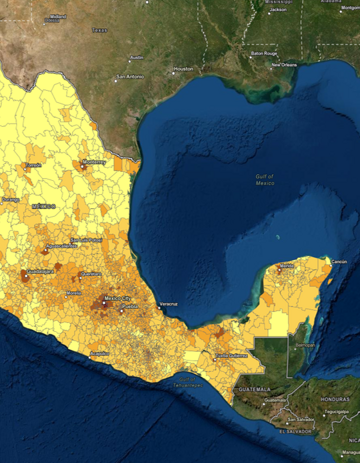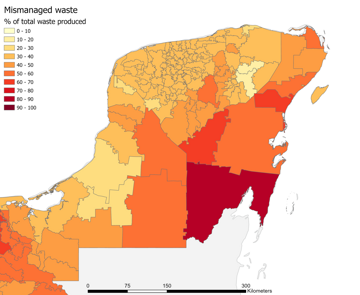New satellite application helps reduce waste problems in emerging economies
The new Dutch satellite application GreySat helps companies and governments to globally map waste problems. With this knowledge, they can reduce risks to, for example, water quality. GreySat was developed by the company 52Impact, with financial support from the NSO through ESA's Business Applications Space Solutions program.
It all started with a request from a number of companies in the food and beverage industry. They were looking for information on waste and wondered: could you use satellite data to say something about where waste accumulates? And about the impact this has on water quality?

Waste problem in Mexico visualised (image: 52Impact)
These are not easy questions, Koen Verberne admits. He is co-founder and director of 52Impact. But it is definitely worth exploring. Over two years, his company developed an application that uses satellite data to map (large) accumulations of waste.
'What you want most is to monitor waste at street level. There are initiatives for this. People who count every plastic bag, every cigarette butt. But that does not scale well,' says Verberne. 'Based on satellite images and models, we have developed a tool that estimates how much waste is in certain places. For this, you need a lot of information, for example on the population, how much waste is produced and environmental factors, such as land use, rivers, wind direction and much more.'
GreySat does not just create 'waste maps'. It also includes a model that predicts which waste problems occur for different variables. Based on this information, governments and businesses can develop strategies to reduce waste problems. Initial demonstrations of the model, including in Mexico, proved successful.
Emerging economies
Potential users of the application are large companies and (local) governments responsible for public health, especially in emerging economies such as in Southeast Asia and Latin America. That is where a lot of waste is produced, but waste processing is not yet sufficiently developed.

Waste management lags behind waste generation in many areas. (Image: 52Impact)
Verberne: 'Companies and governments can use Greysat in their decision-making. For example, to determine where waste poses a risk to the quality of the water they want to use in their production process and which intervention will be most effective at those locations. A few months or years later, they can use the same satellite application to monitor whether the waste reduction measures have been effective.'
Verberne calls developing Greysat complicated and challenging: 'Very little is known about waste. On top of that, everyone contributes a very small amount to the waste problem. We all suffer from it, but often no one ultimately feels responsible for the problem.'
According to Verberne, the future lies in an open access application to which many different parties can contribute: 'When large producers of waste work together with, for example, inspection services and governments, satellite monitoring - in combination with other datasets - can be very effective in identifying and reducing the risks of waste.'